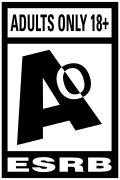Especialidades JA/Crítica de medios visuales/Respuestas
Nivel de destreza
2
Año
2016
Version
20.12.2025
Autoridad de aprobación
División Norteamericana
| Tip for earning from home during the pandemic | |
| Several requirements require a discussion with a Pathfinder group. Thus, this is best done with several friends working on the honor simultaneously. You can use video conferencing technology to conduct the discussions. |
1
Types of visual media include digital and printed images, photography, graphic design, fashion, videos, architectural structures and fine arts. Visual media is seen on billboards, smartphones, newspapers, screen projectors, posters, televisions, computers and various other mediums and devices. Visual media is interpreted using primarily what humans see, as opposed to aural or tactile media. It plays a role in advertising, art, communication, education, business and engineering. Visual media is often used as a learning aid, such as in presentations and training guides. Photography and video are major types of visual media and captures a location or moment in a visual form. Fine arts such as painting and drawing are also visual and communicate elements of life and interpretations. Graphic design and drafting use computer-aided imaging software to create visual representations of life or art. Architecture relies on visual guidelines and appeals to visual senses, as does fashion.
All these mediums can be used to spread the gospel message. Some examples include 3ABN, Adventist World Radio, Hope Channel, or PraizeVision.
In addition, media technology, live streaming broadcasting, archived media services, and radio webcasting are also mediums that are used to spread the Word.
2
Estos dos párrafos se pueden encontrar en el sitio web de escritos de Elena G. de White.
Ellen G. White uses several biblical passage to remind us that our thoughts become who we are. We must guard our hearts from unholy things, since Satan will use everything he can, including visual media, to distract us and destroy us.
As for our senses, a large screen, such as those found in a movie theatre combined with its loud volume can subdue the senses of attentiveness, rendering a person unaware of their immediate surroundings. This inattentiveness to our actual surroundings can prove deadly and catastrophic, as it did in the 2012 Aurora shooting.
3
El sistema de clasificación de juegos utilizado en Norteamérica usa los siguientes códigos:
| Icon | Rating/Interactive Elements | Active since | Description |
|---|---|---|---|

|
Rating Pending (RP) | 1994 | This symbol is used exclusively in the promotional material of games which have not yet been assigned a final rating by the ESRB. |

|
Early Childhood (EC) | 1994 | Games with this rating contain content aimed towards young children. They contain no objectionable content. |
 80px 80px
|
Everyone (E) | 1998 | Games with this rating contain content which the ESRB believes is "generally suitable for all ages". They can contain infrequent use of "mild"/cartoon violence and mild language. Until 1998, when it was renamed "Everyone", this rating was known as Kids to Adults (K-A). |

|
Everyone 10+ (E10+) | March 2005 | Games with this rating contain content which the ESRB believes is generally suitable for those aged 10 years and older. They can contain a greater amount of violence, mild language, crude humor, or suggestive content than the standard "Everyone" rating can accommodate, but not to the same extent as the "Teen" rating. |

|
Teen (T) | 1994 | Games with this rating contain content which the ESRB believes is generally suitable for those aged 13 years and older; they can contain moderate amounts of violence (including small amounts of blood), mild to moderate use of strong language or suggestive themes, sexual content, and crude humor. |

|
Mature (M) | 1994 | Games with this rating contain content which the ESRB believes is generally suitable for those aged 17 years and older; they can contain content with an impact higher than the "Teen" rating can accommodate, including intense and/or realistic portrayals of violence (such as blood, gore, mutilation, and depictions of death), stronger sexual themes and content, partial nudity, and more frequent use of strong language. |

|
Adults Only (AO) | 1994 |
Games with this rating contain content which the ESRB believes is suitable for those aged 18 years and older; they contain content with an impact higher than the "Mature" rating can accommodate, including strong sexual themes and content, graphic nudity, or extreme portrayals of violence. The majority of AO-rated games are adult video games with pornographic content: the ESRB has seldom issued the AO rating solely for violence. |
El sistema de clasificación de películas en los Estados Unidos utiliza los siguientes códigos:
| Símbolo de clasificación | Significado |
|---|---|
| |
| |
| |
| |
|
|-
| align="center" | PG || Parental Guidance Suggested || "Parents urged to give 'parental guidance.' May contain some material parents might not like for their young children." On the box: "Some material may not be suitable for children"
|-
| align="center" | PG-13 || Parents Strongly Cautioned || "Parents are urged to be cautious. Some material may be inappropriate for pre-teenagers." On the box: "Some material may be inappropriate for children under 13"
|-
| align="center" | R || Restricted || "Contains some adult material. Parents are urged to learn more about the film before taking their young children with them." On the box: "Under 17 requires accompanying parent or adult guardian"
|-
| align="center" | NC-17|| Adults Only || "Clearly adult. Children are not admitted." On the box: "No One 17 and Under Admitted"
|}
The television rating system within the US uses the following codes:
| Icon | Rating | Description |
|---|---|---|
| This program is designed to be appropriate for all children. | Programs rated TV-Y are designed to be appropriate for children of all ages. The thematic elements portrayed in programs with this rating are specifically designed for a very young audience, including children from ages 2–6. | |
| Most parents would find this program suitable for all ages. | Programs rated TV-Y7 are designed for children age 7 and older. The FCC states that it "may be more appropriate for children who have acquired the developmental skills needed to distinguish between make-believe and reality." Programs given the "FV" content descriptor exhibit more 'fantasy violence', and are generally more intense or combative than other programs rated TV-Y7. | |
| Most parents would find this program suitable for all ages. | Programs rated TV-G are generally suitable for all ages. The FCC states that "this rating does not signify a program designed specifically for children, most parents may let younger children watch this program unattended." The thematic elements portrayed in programs with this rating contain little or no violence, no strong language, and little or no sexual dialogue or situations. | |
| This program contains material that parents may find unsuitable for younger children. | Programs rated TV-PG contain material that parents or guardians may find inappropriate for younger children. Programs assigned a TV-PG rating may include some mild to moderate profanity, some sexual content, suggestive dialogue and/or violence. | |
| This program contains some material that many parents would find unsuitable for children under 14 years of age. | Programs rated TV-14 may contain some material that parents or adult guardians may find unsuitable for children under the age of 14. The FCC warns that "Parents are cautioned to exercise some care in monitoring this program and are cautioned against letting children under the age of 14 watch unattended." | |
| This program is specifically designed to be viewed by adults and therefore may be unsuitable for children under 17. | Some content may be unsuitable for children under 17. This rating is very seldom used by broadcast networks or local television stations due to FCC restrictions on program content, although it is commonly applied to television programs featured on certain cable channels (particularly premium networks) and streaming networks for both mainstream and softcore programs. Programs with this rating commonly include strong and frequent sexual content, extreme violence, or both. |
Philippians 4:8 says the following:
Finally, brethren, whatever things are true, whatever things are noble, whatever things are just, whatever things are pure, whatever things are lovely, whatever things are of good report, if there is any virtue and if there is anything praiseworthy—meditate on these things.
Mankind has attempted to develop a rating system for much of its visual media content. However, this is a manmade system and was not created with spiritual matters or God in mind. Some of these rating systems might consider a particular program "safe" for a general audience, but Christians would disagree with much of the content.
The Bible gives us a good and clear list of what we should ponder and think about when we consume visual media. It tells us to fill our minds with things that are true, lovely, pure, etc. When determining what kind of content to watch, don't let yourself be guided by the world's standard of morals, but by God's standard of truth and purity.
4
5
The average person in North America watches nearly 5 hours of video each day, 98% of which is watched on a traditional television set, according to Nielsen Company. Nearly two-thirds of TV programs contain some physical violence. Most self-involving video games contain some violent content, even those for children.&
In reality, the number of violent crimes has been falling, but the public’s perception is that violence has increased. According to the US Bureau of Justice Statistics, the overall violent victimization rate (eg, rape and assaults) decreased by 40% from 2001 to 2010. Similarly, the murder rate in the US has dropped by almost half, from 9.8 per 100,000 people in 1991 to 5.0 in 2009.
A 2002 report by the US Secret Service and the US Department of Education, which examined 37 incidents of targeted school shootings and school attacks from 1974 to 2000 in this country, found that “over half of the attackers demonstrated some interest in violence through movies, video games, books, and other media.”&
In a 2009 Policy Statement on Media Violence, the American Academy of Pediatrics said, “Extensive research evidence indicates that media violence can contribute to aggressive behavior, desensitization to violence, nightmares, and fear of being harmed.”&
In 2012, the Media Violence Commission of the International Society for Research on Aggression (ISRA) in its report on media violence said, “Over the past 50 years, a large number of studies conducted around the world have shown that watching violent television, watching violent films, or playing violent video games increases the likelihood for aggressive behavior.”&
According to the commission, more than 15 meta-analyses have been published examining the links between media violence and aggression. Anderson and colleagues,& for instance, published a comprehensive meta-analysis of violent video game effects and concluded that the “evidence strongly suggests that exposure to violent video games is a causal risk factor for increased aggressive behavior, aggressive cognition, and aggressive affect and for decreased empathy and prosocial behavior.”
In 2007, Anderson’s group reported on a longitudinal study of violent video games. The study queried children and their peers as well as teachers on aggressive behaviors and violent media consumption twice during a school year. The researchers found that boys and girls who played a lot of violent video games changed over the school year, becoming more aggressive.&
“There now are numerous longitudinal studies by several different research groups around the world, and they all find significant violent video game exposure effects,” Anderson said.
There is growing evidence, Anderson said, that high exposure to fast-paced violent games can lead to changes in brain function when processing violent images, including dampening of emotional responses to violence and decreases in certain types of executive control. But there also is some evidence that the same type of fast-paced violent games can improve some types of spatial-visual skills, basically, ability to extract visual information from a computer screen.
6
7
- "The talent of time is precious. Every day it is given to us in trust, and we shall be called upon to give an account of it to God. It is to be used to God's glory, and if we would prolong our lives, if we would gain the life that measures with the life of God, we must give the mind pure food. No time should be wasted that might have been used to good account.
- Jesus Christ is our spiritual touchstone. He reveals the Father. Nothing should be given as food to the brain that will bring before the mind any mist or cloud in regard to the Word of God. No careless inattention should be shown in regard to the cultivation of the soil of the heart." -- Manuscript 15, 1898.
- "Upon the right improvement of our time depends our success in acquiring knowledge and mental culture. The cultivation of the intellect need not be prevented by poverty, humble origin, or unfavorable surroundings. Only let the moments be treasured. A few moments here and a few there, that might be frittered away in aimless talk; the morning hours so often wasted in bed; the time spent in traveling on trams or railway cars, or waiting at the station; the moments of waiting for meals, waiting for those who are tardy in keeping an appointment—if a book were kept at hand, and these fragments of time were improved in study, reading, or careful thought, what might not be accomplished. A resolute purpose, persistent industry, and careful economy of time, will enable men to acquire knowledge and mental discipline which will qualify them for almost any position of influence and usefulness.
- It is the duty of every Christian to acquire habits of order, thoroughness, and dispatch... Decide how long a time is required for a given task, and then bend every effort toward accomplishing the work in the given time. The exercise of the will power will make the hands move deftly." -- Christ's Object Lessons, pg. 343-344
- "It is wrong to waste our time, wrong to waste our thoughts. We lose every moment that we devote to self-seeking. If every moment were valued and rightly employed, we should have time for everything that we need to do for ourselves or for the world. In the expenditure of money, in the use of time, strength, opportunities, let every Christian look to God for guidance." -- The Ministry of Healing, pg. 208
- "God grants men the gift of time for the purpose of promoting His glory." -- Counsels to Parents, Teachers, and Students, pg. 354
8
- a. Tiempo dedicado en mirar los medios
- b. Clasificación de medios y organización de clasificación (si está disponible)
- c. La trama o el tema
- d. Pureza de contenido vs. temas sexuales y/o violentos
- e. El mensaje que fue presentado por los medios de comunicación
- Preparar un gráfico o tabla que ilustre sus hallazgos. ¿Qué cambios, si los hay, necesita hacer a sus hábitos de mirar los medios? Evaluar cómo ser cristiano debe afectar su uso de los medios de comunicación. Ser detallado y sincero, teniendo en cuenta lo que ha experimentado en esta especialidad. Compartir su evaluación en una carta, informe o diario con un amigo o líder confiado.
9
- a. ¿Encontró la presentación entretenida?
- b. ¿Aprendió algo valioso?
- c. ¿Vería la presentación de nuevo? ¿Por qué sí o por qué no?
- d. ¿Siente que su tiempo estuvo bien gastado en mirar los medios?
10
References
- ↑ Saleem M, Anderson CA. The good, the bad, and the ugly of electronic media. In: Dvoskin J, Skeem JL, Novaco RW, Douglas KS, eds. Applying Social Science to Reduce Violent Offending. New York: Oxford University Press; 2012:83-101.
- ↑ Vossekuil B, Fein RA, Reddy M, et al. The Final Report and Findings of the Safe School Initiative: Implications for the Prevention of School Attacks in the United States. Washington, DC: US Secret Service, US Dept of Education; May 2002.
- ↑ Council on Communications and Media. From the American Academy of Pediatrics: Policy statement—Media violence. Pediatrics. 2009;124:1495-1503.
- ↑ Media Violence Commission, International Society for Research on Aggression (ISRA). Report of the media violence commission. Aggress Behav. 2012;38:335-341.
- ↑ Anderson CA, Shibuya A, Ihori N, et al. Violent video game effects on aggression, empathy, and prosocial behavior in eastern and western countries: a meta-analytic review. Psychol Bull. 2010;136:151-173.
- ↑ Anderson CA, Gentile DA, Buckley KE. Violent Video Game Effects on Children and Adolescents: Theory, Research, and Public Policy. New York: Oxford University Press; 2007.



